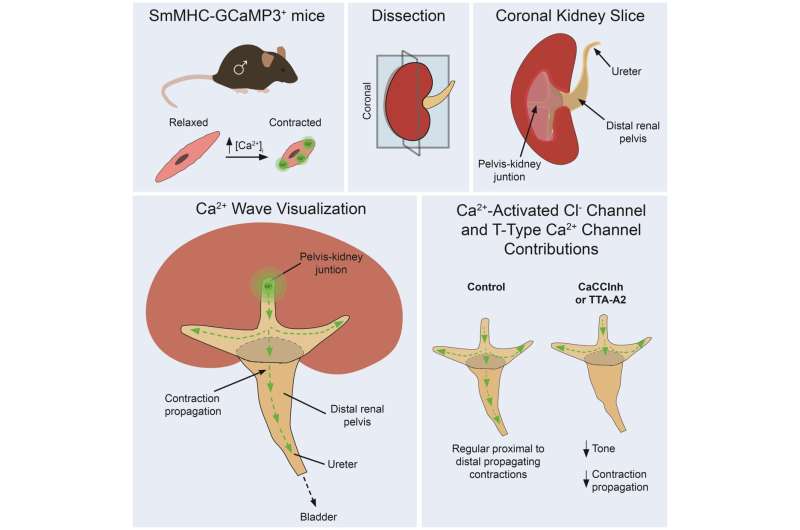New therapeutics could help treat excess urine in the kidneys

Physiologists at the University of Nevada, Reno have identified two ion channels necessary for urine to flow from the kidneys to the ureters. A calcium-activated chloride channel and a voltage-dependent calcium channel are required for contractions to travel from the proximal renal pelvis to the ureters. When researchers blocked the activation of these specific ion channels, the number of contractions that spread throughout the renal pelvis decreased or failed to fully expand to the ureters resulting in a buildup of excess urine (hydronephrosis). An organized pattern of muscle contractions and relaxation occurs along the length of the renal pelvis to move urine out of the kidneys.
Researchers investigated how urine travels from the kidneys to the ureters. Concentrated urine flows out of the kidneys through the renal pelvis. The renal pelvis is lined with smooth muscle cells that contract rhythmically to force urine out. This study aimed to determine the mechanisms required to allow muscle contractions to expand from the proximal part of the renal pelvis to the ureters. This mechanism is essential for ensuring urine is eliminated from the kidneys.
"These findings improve our understanding of how the renal pelvis moves urine from the kidneys to the bladder," said Nathan Grainger, Ph.D., co-author of the study. "This is important for human health because it will provide us with a better understanding of how the renal pelvis smooth muscle works and allow us to find therapeutics to target specific ion channels to treat hydronephrosis."
The research was published in Function.
More information: Nathan Grainger et al, Propagation of pacemaker activity and peristaltic contractions in the mouse renal pelvis rely on Ca2+ -activated-Cl− channels and T-Type Ca2+ channels, Function (2022). DOI: 10.1093/function/zqac041


















